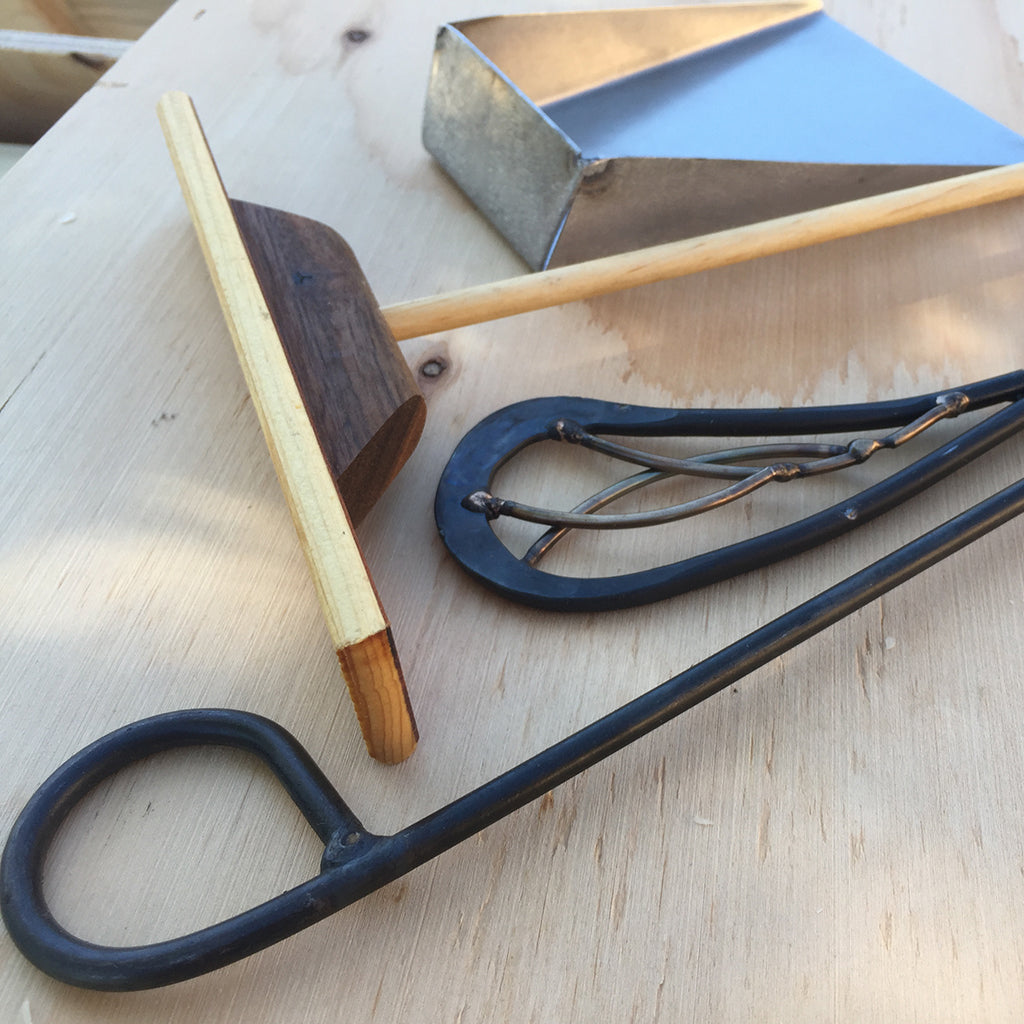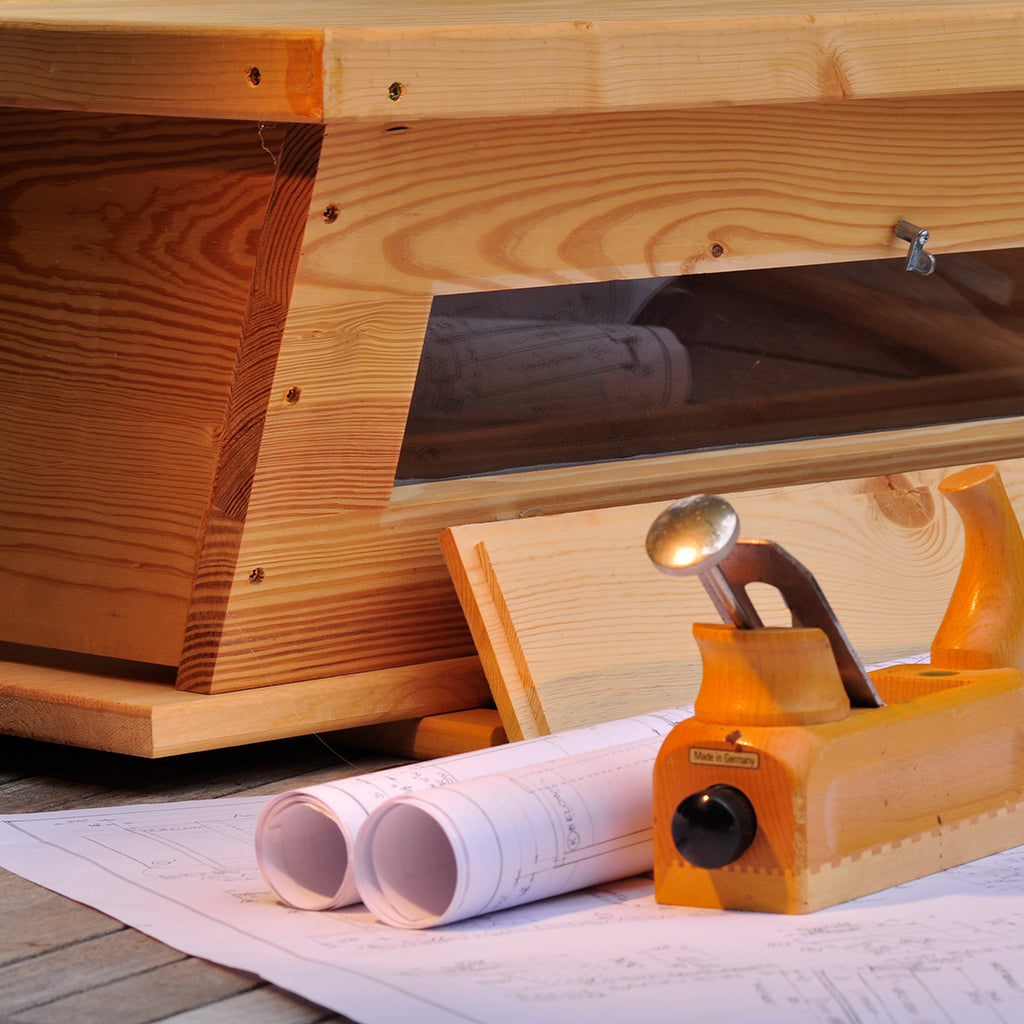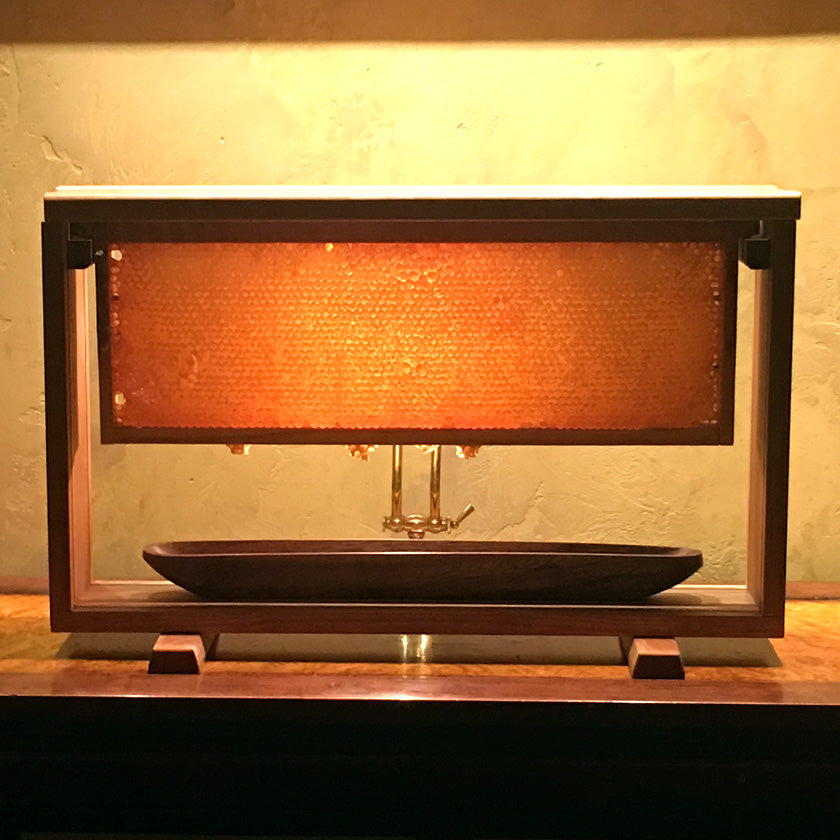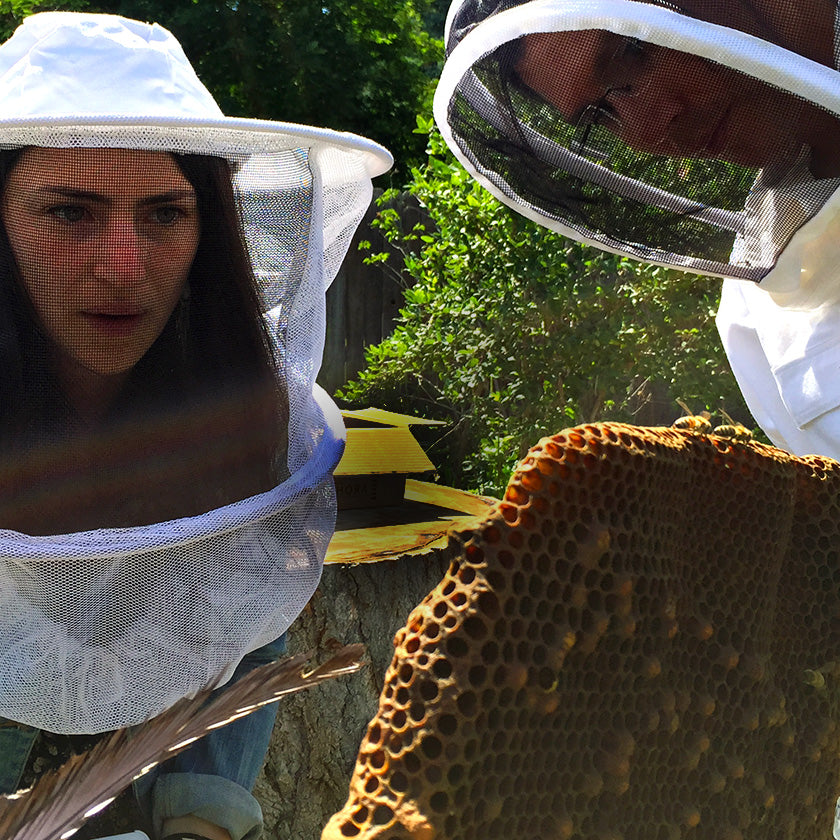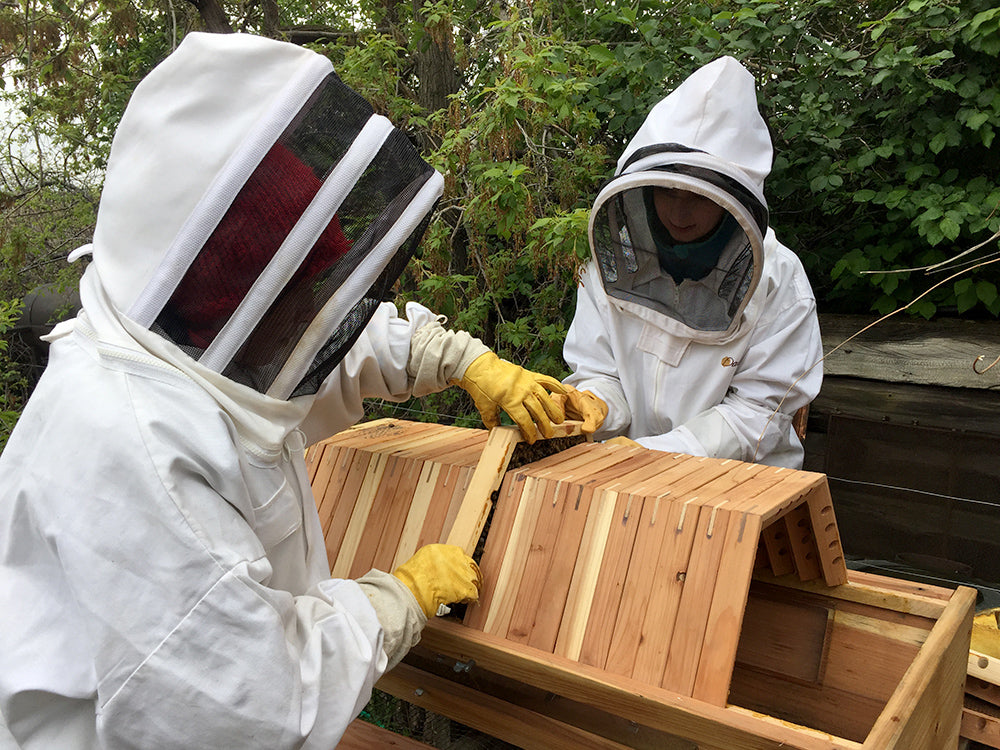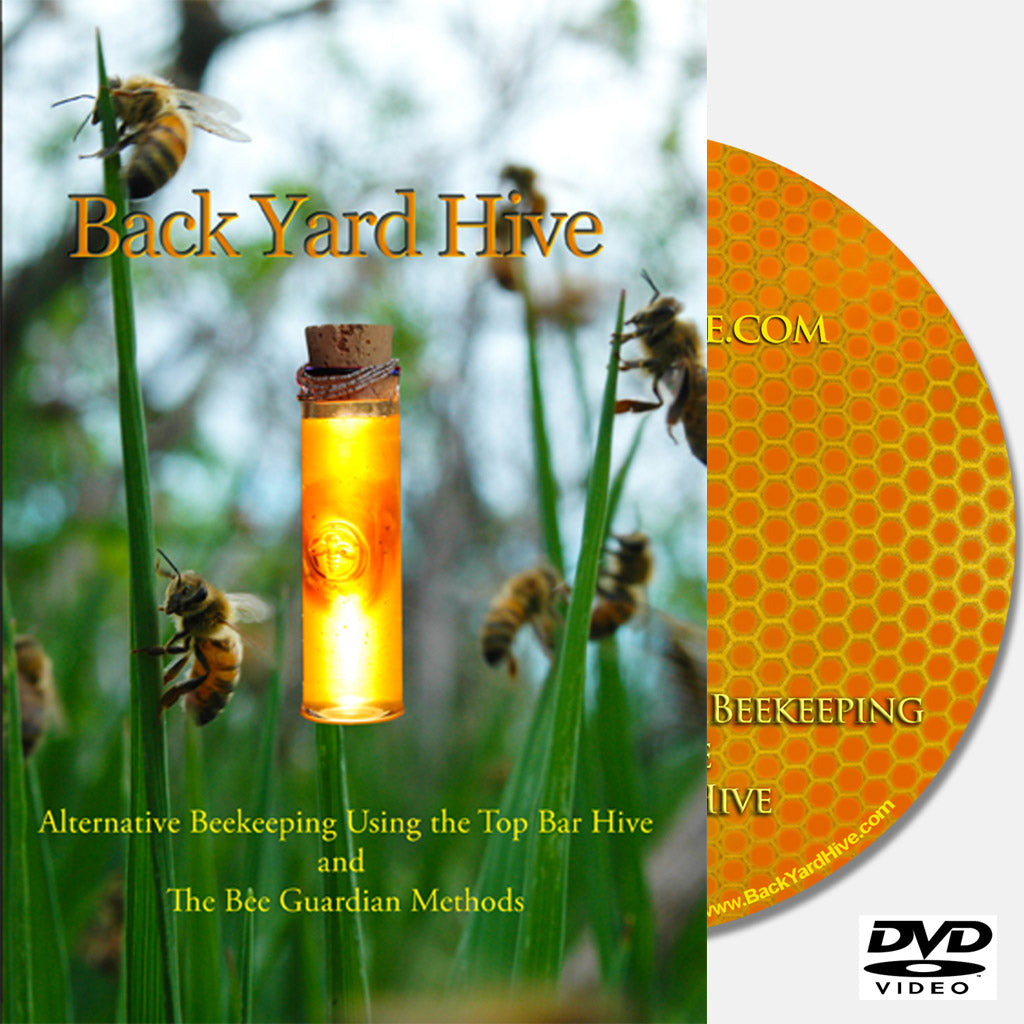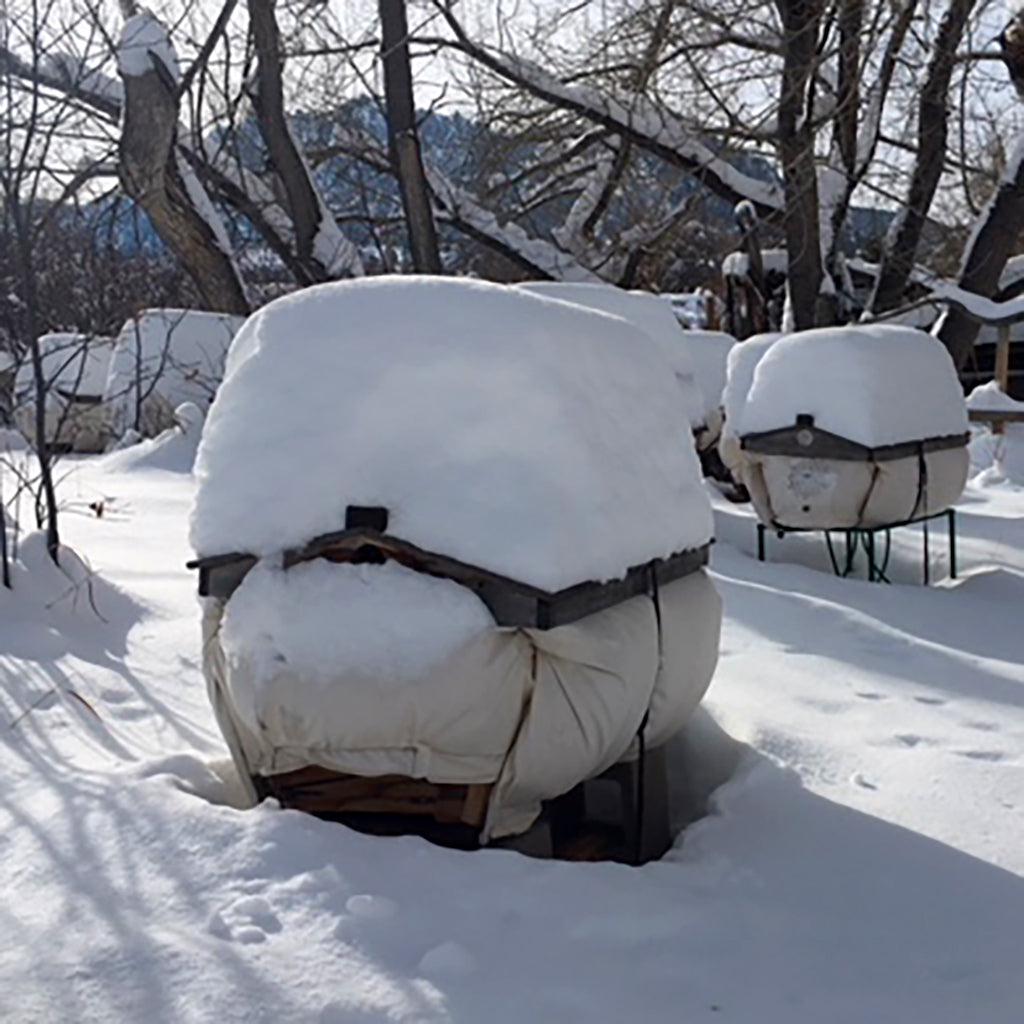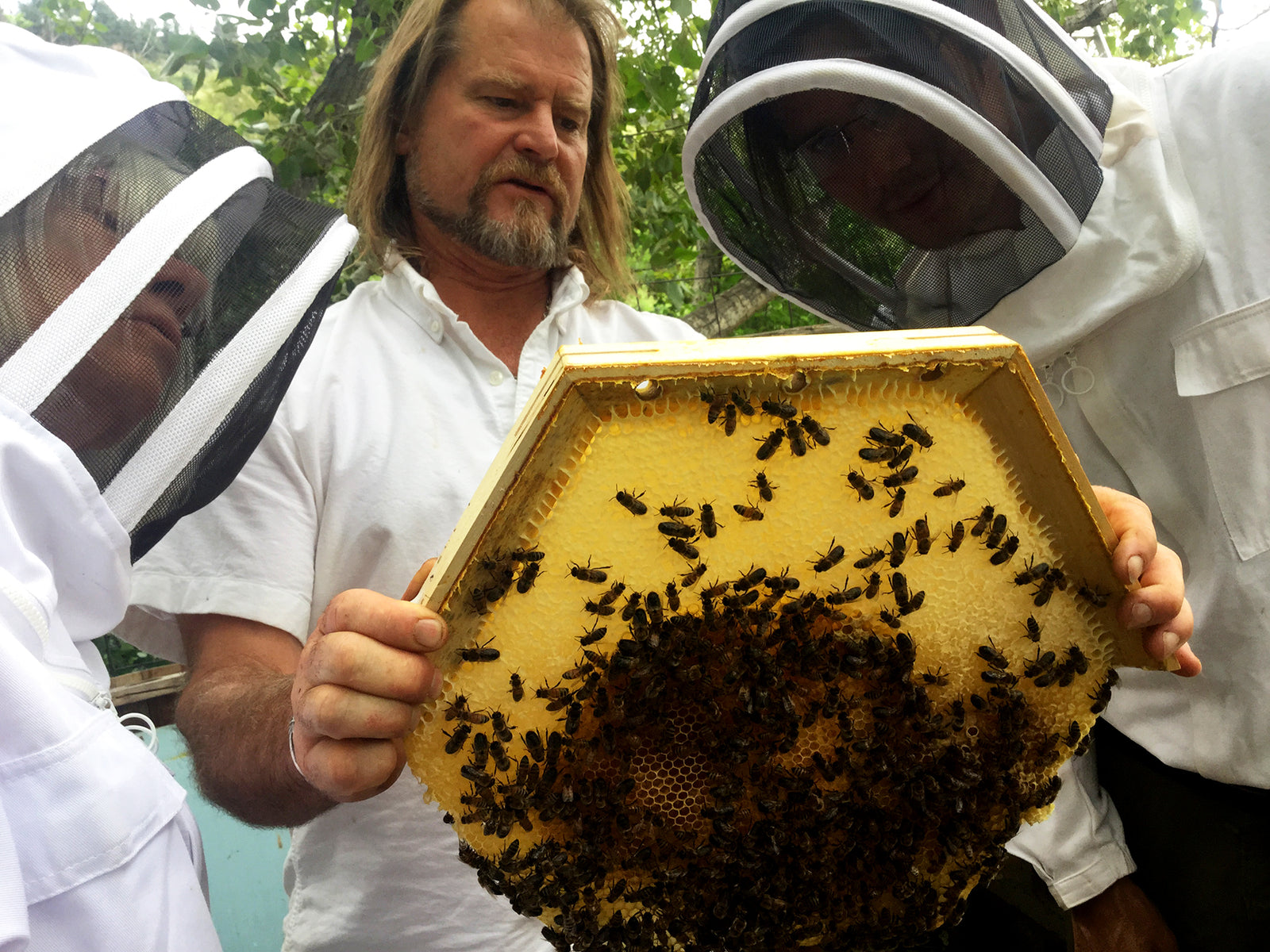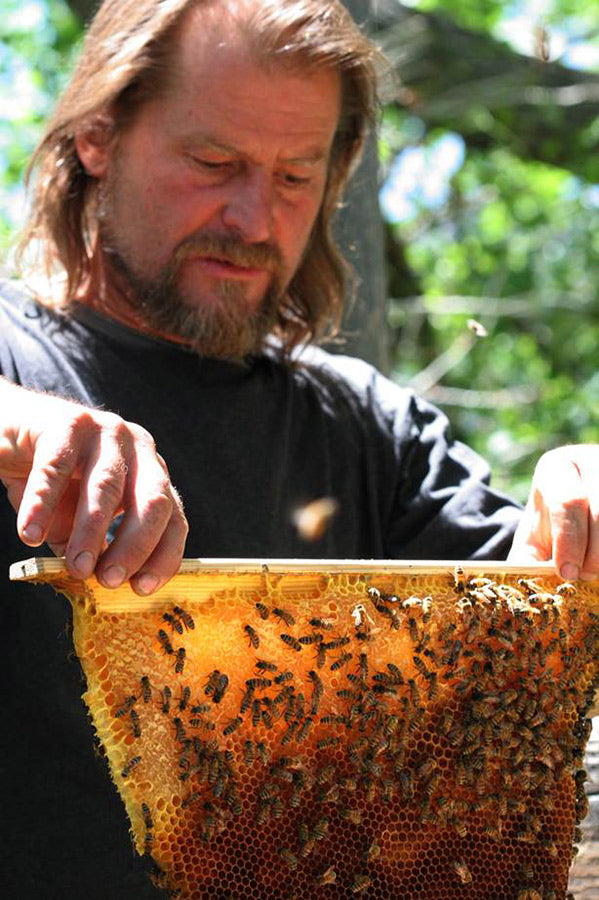There are four ways to get bees: you can buy a nucleus (a “nuc”), you can buy a package of bees, or you can get on a swarm list and either buy a swarm from someone who has already collected them or you may catch the swarm yourself.
A nuc is a starter kit for a Langstroth hive. The bees and their queen have already drawn out comb on Langstroth frames. It’s a bit like a mini-Lang hive. It’s quite difficult and messy to retro fit a nuc into a top bar hive. You have to take the square frames apart, and then cut both the top frame and the comb itself in order to fit it into the angled-sided top bar hive. We don’t really recommend this method.
The most common way of obtaining bees is to order a package. You can expect to spend from $80 - $120 for a package of bees.
If you buy a package of bees, you might be best off buying from a local supplier. There are a lot more suppliers who provide bees locally than suppliers who will ship bees through the mail. See our list of package suppliers to order bees.
Bees are shipped in the spring (which is also swarming season) but you need to place your order by November if you want to be assured of getting bees. Most suppliers sell out quickly because most commercial beekeepers lose a substantial portion of their bees every year to parasites and disease and now CCD-- this creates a constant demand for new bees. My experience with purchased bees is limited to what I've read and heard from other beekeepers.
When you order bees they are usually "created." The Queens are bred or manufactured and then put into a box with bees that are not the queen’s offspring. Then the bees are shipped, which is quite stressful for them. Bees that are shipped to different climate zones may not have the genetic knowledge to survive healthily in their new homes.
My preferred method is capturing wild swarms. I do this because I believe that wild swarms are more suited to my local climate and they have the strongest immune system. You can be sure that a wild swarm came from a healthy hive or they wouldn't have swarmed in the first place.
Check this link to find resources for swarm removers where you may be able to get on their list for a swarm of bees. Or try calling your local beekeeping association and seeing if they have a list you can get on for a swarm of bees. A swarm of bees is free if you catch it yourself or usually up to $50 if someone else catches it for you.
In most cases, when a swarm is called into the bee removers they will first try to call a beekeeper on a list. Bee removers will work through their list to find a beekeeper willing to remove the swarm. If it is an exterminator and the beekeepers don't respond the bees are usually sprayed with insecticide by the exterminators :-(.
It is a very rewarding experience to go get your own bees from a wild swarm. You can read our article about catching a swarm on our website. Getting a wild swarm is very exciting and not nearly as dangerous as it sounds. Much of what people believe about bee swarms is a product of Hollywood and the media and simply untrue.
Generally the bees are not aggressive because they are not protecting a hive. Aggressive behavior from bees is almost always related to their instinct to protect their honey stores in their hive from predators. Bees that have just swarmed and are in the process of locating a new home are not inclined to be aggressive or defensive. They have just one thing on their collective mind -- to find a new home. Collecting a wild swarm is as simple as finding a swarm and dropping it into a box. It seems scary, but it is in fact how bees were collected for centuries.
When you get a call from the exterminators, go to the site of the swarm and estimate if the swarm is low enough for you to reach by cutting away a few branches if necessary. Is it consolidated on a low hanging branch? If so this may be a great swarm to go for. Avoid swarms that are embedded deep in trees or clinging under eaves of houses.
To capture the bees take a cardboard box and cut a hole 3"x3" into the side and tape on a screen of some sort. This will give the bees air and ventilation. You will also be able to mist the screen to give the bees water for cooling, if the trip home is extended.
The goal is to capture, all at once, the bulk of the bees and the queen who is usually clustered in the center of the swarm. Hold the box under the ball of bees, get a good grip on the branch, and in one firm movement shake the bees into the box. Or cut the branch and lower it into the box with the bees still attached. This way there will be fewer bees flying around.
Gently lower the box to the ground and let the bees gather into the box. If you got the queen in the box, all the bees will eventually collect into the box. If the queen is in the box you will also see the bees fanning, sticking their butts in the air and flapping their wings, sending off the colony’s pheromone to alert all the bees that the queen is inside. It takes about an hour depending on the time of day for the bees to all collect inside the box with their queen. The best time to get a swarm is close to sunset as during the day there are many scout bees out looking for the colony’s new home and also some bees out fetching water for the rest of the swarm.


